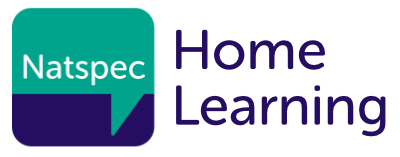St John’s College has developed a series of Daily Home-Learning Briefs which are sent home to learners.
- Download a template for the home-learning brief, and a completed example.
Introduce the approach or activity
Once a week we send out the 5 daily briefs to home-learners. Each daily brief contains three activities (vocational, as well as well-being) that provide opportunities for learners to practice, develop and demonstrate different core skills and continue to work towards EHCP outcomes while at home. The activities can be adapted to suit the tech, resources, materials and time that learners/parents have available at home.
Each activity has a clear ‘task objective’ which supports parents/carers to understand the relevance and learning of the activity, a list of required materials and the estimated time it will take to complete. Some briefs have accompanying resources or worksheets and many also contain links to our dedicated Youtube channel, where supporting videos are recorded and uploaded by teaching staff.
Briefs are differentiated 5 ways relating to both literacy and numeracy cognitive ability (depending on the task) – (M5-M6, M7-M8, EL1, EL2, EL3 and L1). Each week during welfare calls, parents are invited to feedback on how challenging the work is for their young person, enabling us to monitor and adjust work accordingly. Similarly, where learners require work in different formats or additional communication tools to access the work, these are posted out individually.
Resource developed for the following learner cohorts
Adult SEN learners working at a range of cognitive levels (M5 to L1) with a range of learning disabilities, sensory/communication difficulties, complex behavioural needs and ASC.
Top tips and key considerations
- The briefs are clear, organised and have an overarching rationale that contains all the information a learner/parent needs to complete the activities, including where to send evidence to (and in what formats) and who to contact if they need help. When additional resources are required, they are listed on the brief under each activity.
- The activities are differentiated appropriately to the needs of the learner and this is monitored and adjusted as required.
- There is a clear task objective for each activity so learners/parents can see the relevance and value of the embedded learning.
- Each task has an estimated time it will take to complete, which enables learners/parents to plan their time at home more effectively.
- The activities are designed to be completed at home and therefore do not require specialist equipment or resources or can be adapted to suit the materials available.
- The briefs contain a variety of activities (practical, paper-based, e-learning, video sessions etc) which supports learner engagement and accommodates different learning styles.
- The approach to evidence collection is flexible and allows learners/parents to submit work in multiple formats.
What resources are required?
- A device with internet access (computer, tablet, phone etc.) – paper-based copies of briefs are posted where required.
- A way of collecting evidence (smartphone, camera etc)
How will you capture evidence of learning?
Each activity includes an email address for learners/parents to return evidence. Evidence can be submitted in multiple formats (video clips, photographs, written witness statements) by email, or as verbal feedback over the phone. We are also developing a learner daily log, to support evidence gathering.
As evidence is submitted to teachers directly each week, it allows monitoring of progress against specific tasks/targets, feedback from teacher to learner, and direct contact with parents who may need additional guidance or advice from a subject specialist.
The briefs can be used in conjunction with online video-link sessions whereby learners complete the activities at home individually before meeting up (online) to present their outcomes/work to their peers in a group forum. This not only creates a safe, teacher-moderated space for learners to interact with each other socially but also creates opportunities for peer review, discussion/debate and group feedback whilst learners are in lockdown.
Details of parental and learner contacts are logged on the MIS system.

